Gene therapy for people with hepatocellular carcinoma
- PMID: 38837373
- PMCID: PMC11152182
- DOI: 10.1002/14651858.CD013731.pub2
Gene therapy for people with hepatocellular carcinoma
Abstract
Background: Hepatocellular carcinoma is the most common type of liver cancer, accounting for 70% to 85% of individuals with primary liver cancer. Gene therapy, which uses genes to treat or prevent diseases, holds potential for treatment, especially for tumours. Trials on the effects of gene therapy in people with hepatocellular carcinoma have been published or are ongoing.
Objectives: To evaluate the benefits and harms of gene therapy in people with hepatocellular carcinoma, irrespective of sex, administered dose, and type of formulation.
Search methods: We identified randomised clinical trials through electronic searches in The Cochrane Hepato-Biliary Group Controlled Trials Register, CENTRAL, MEDLINE, Embase, LILACS, Science Citation Index Expanded, and Conference Proceedings Citation Index-Science. We searched five online clinical trial registries to identify unpublished or ongoing trials. We checked reference lists of the retrieved studies for further trials. The date of last search was 20 January 2023.
Selection criteria: We aimed to include randomised clinical trials assessing any type of gene therapy in people diagnosed with hepatocellular carcinoma, irrespective of year, language of publication, format, or outcomes reported.
Data collection and analysis: We followed Cochrane methodology and used Review Manager to prepare the review. The primary outcomes were all-cause mortality/overall survival (whatever data were provided), serious adverse events during treatment, and health-related quality of life. The secondary outcomes were proportion of people with disease progression, adverse events considered non-serious, and proportion of people without improvement in liver function tests. We assessed risk of bias of the included trials using RoB 2 and the certainty of evidence using GRADE. We presented the results of time-to-event outcomes as hazard ratios (HR), dichotomous outcomes as risk ratios (RR), and continuous outcomes as mean difference (MD) with their 95% confidence intervals (CI). Our primary analyses were based on intention-to-treat and outcome data at the longest follow-up.
Main results: We included six randomised clinical trials with 364 participants. The participants had unresectable (i.e. advanced inoperable) hepatocellular carcinoma. We found no trials assessing the effects of gene therapy in people with operable hepatocellular carcinoma. Four trials were conducted in China, one in several countries (from North America, Asia, and Europe), and one in Egypt. The number of participants in the six trials ranged from 10 to 129 (median 47), median age was 55.2 years, and the mean proportion of males was 72.7%. The follow-up duration ranged from six months to five years. As the trials compared different types of gene therapy and had different controls, we could not perform meta-analyses. Five of the six trials administered co-interventions equally to the experimental and control groups. All trials assessed one or more outcomes of interest in this review. The certainty of evidence was very low in five of the six comparisons and low in the double-dose gene therapy comparison. Below, we reported the results of the primary outcomes only. Pexastimogene devacirepvec (Pexa-Vec) plus best supportive care versus best supportive care alone There is uncertainty about whether there may be little to no difference between the effect of Pexa-Vec plus best supportive care compared with best supportive care alone on overall survival (HR 1.19, 95% CI 0.78 to 1.82; 1 trial (censored observation at 20-month follow-up), 129 participants; very low-certainty evidence) and on serious adverse events (RR 1.42, 95% CI 0.60 to 3.33; 1 trial at 20 months after treatment, 129 participants; very low-certainty evidence). The trial reported quality of life narratively as "assessment of quality of life and time to symptomatic progression was confounded by the high patient dropout rate." Adenovirus-thymidine kinase with ganciclovir (ADV-TK/GCV) plus liver transplantation versus liver transplantation alone There is uncertainty about whether ADV-TK/GCV plus liver transplantation may benefit all-cause mortality at the two-year follow-up (RR 0.39, 95% CI 0.20 to 0.76; 1 trial, 45 participants; very low-certainty evidence). The trial did not report serious adverse events other than mortality or quality of life. Double-dose ADV-TK/GCV plus liver transplantation versus liver transplantation alone There is uncertainty about whether double-dose ADV-TK/GCV plus liver transplantation versus liver transplantation may benefit all-cause mortality at five-year follow-up (RR 0.40, 95% CI 0.22 to 0.73; 1 trial, 86 participants; low-certainty evidence). The trial did not report serious adverse events other than mortality or quality of life. Recombinant human adenovirus-p53 with hydroxycamptothecin (rAd-p53/HCT) versus hydroxycamptothecin alone There is uncertainty about whether there may be little to no difference between the effect of rAd-p53/HCT versus hydroxycamptothecin alone on the overall survival at 12-month follow-up (RR 3.06, 95% CI 0.16 to 60.47; 1 trial, 48 participants; very low-certainty evidence). The trial did not report serious adverse events or quality of life. rAd-p53/5-Fu (5-fluorouracil) plus transarterial chemoembolisation versus transarterial chemoembolisation alone The trial included 46 participants. We had insufficient data to assess overall survival. The trial did not report serious adverse events or quality of life. E1B-deleted (dl1520) adenovirus versus percutaneous ethanol injection The trial included 10 participants. It did not report data on overall survival, serious adverse events, or health-related quality of life. One trial did not provide any information on sponsorship; one trial received a national research grant, one trial by the Pedersen foundation, and three were industry-funded trials. We found five ongoing randomised clinical trials.
Authors' conclusions: The evidence is very uncertain about the effects of gene therapy on the studied outcomes because of high risk of bias and imprecision of outcome results. The trials were underpowered and lacked trial data on clinically important outcomes. There was only one trial per comparison, and we could not perform meta-analyses. Therefore, we do not know if gene therapy may reduce, increase, or have little to no effect on all-cause mortality or overall survival, or serious adverse events in adults with unresectable hepatocellular carcinoma. The impact of gene therapy on adverse events needs to be investigated further. Evidence on the effect of gene therapy on health-related quality of life is lacking.
Copyright © 2024 The Cochrane Collaboration. Published by John Wiley & Sons, Ltd.
Conflict of interest statement
CN: none.
HN is a Cochrane Editor, but had no role in the editorial process for this review.
HHA: none.
NHH: none.
DN is the Managing Editor of the Cochrane hepato‐Biliary Group, but had no role in the editorial process for this review.
Figures
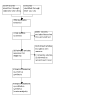



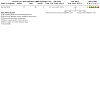
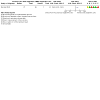
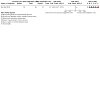
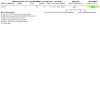
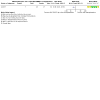

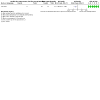
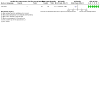
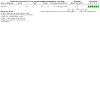

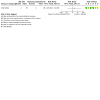
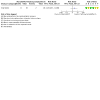
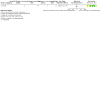
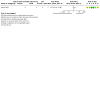
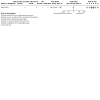
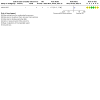
Update of
- doi: 10.1002/14651858.CD013731
Similar articles
-
Tamoxifen for adults with hepatocellular carcinoma.Cochrane Database Syst Rev. 2024 Aug 12;8(8):CD014869. doi: 10.1002/14651858.CD014869.pub2. Cochrane Database Syst Rev. 2024. PMID: 39132750 Free PMC article.
-
Gemcitabine-based chemotherapy for advanced biliary tract carcinomas.Cochrane Database Syst Rev. 2018 Apr 6;4(4):CD011746. doi: 10.1002/14651858.CD011746.pub2. Cochrane Database Syst Rev. 2018. PMID: 29624208 Free PMC article.
-
Management of people with early- or very early-stage hepatocellular carcinoma: an attempted network meta-analysis.Cochrane Database Syst Rev. 2017 Mar 28;3(3):CD011650. doi: 10.1002/14651858.CD011650.pub2. Cochrane Database Syst Rev. 2017. PMID: 28351116 Free PMC article.
-
Corticosteroids for treatment of leptospirosis.Cochrane Database Syst Rev. 2025 Jul 24;7(7):CD014935. doi: 10.1002/14651858.CD014935.pub2. Cochrane Database Syst Rev. 2025. PMID: 40704556
-
Endoscopic sphincterotomy for adults with biliary sphincter of Oddi dysfunction.Cochrane Database Syst Rev. 2024 Mar 22;3(3):CD014944. doi: 10.1002/14651858.CD014944.pub2. Cochrane Database Syst Rev. 2024. PMID: 38517086 Free PMC article.
Cited by
-
Downregulation of Aging-Associated Gene SUCLG1 Marks the Aggressiveness of Liver Disease.Cancers (Basel). 2025 Jan 21;17(3):339. doi: 10.3390/cancers17030339. Cancers (Basel). 2025. PMID: 39941711 Free PMC article.
-
[Nlrp6 overexpression inhibits lipid synthesis to suppress proliferation of hepatocellular carcinoma cells by regulating the AMPK-Srebp1c axis].Nan Fang Yi Ke Da Xue Xue Bao. 2024 Oct 20;44(10):1910-1917. doi: 10.12122/j.issn.1673-4254.2024.10.09. Nan Fang Yi Ke Da Xue Xue Bao. 2024. PMID: 39523091 Free PMC article. Chinese.
-
F13B regulates angiogenesis and tumor progression in hepatocellular carcinoma via the HIF-1α/VEGF pathway.Biomol Biomed. 2024 Dec 11;25(1):189-209. doi: 10.17305/bb.2024.10794. Biomol Biomed. 2024. PMID: 39319846 Free PMC article.
-
Transforming Medicine: Advances in Gene Therapy, Immunotherapy, and Targeted Cures.Curr Protein Pept Sci. 2025;26(6):436-450. doi: 10.2174/0113892037336137250102104842. Curr Protein Pept Sci. 2025. PMID: 39878120 Review.
-
Modified dietary fat intake for treatment of gallstone disease in people of any age.Cochrane Database Syst Rev. 2024 Feb 6;2(2):CD012608. doi: 10.1002/14651858.CD012608.pub3. Cochrane Database Syst Rev. 2024. PMID: 38318932 Free PMC article.
References
References to studies included in this review
Chen 2014 {published data only}
Habib 2002 {published data only}
Li 2007 {published data only}
-
- Li N, Zhou J, Weng D, Zhang C, Li L, Wang B, et al. Adjuvant adenovirus-mediated delivery of herpes simplex virus thymidine kinase administration improves outcome of liver transplantation in patients with advanced hepatocellular carcinoma. Clinical Cancer Research 2007;13:5847-54. [DOI: 10.1158/1078-0432.CCR-07-0499] - DOI - PubMed
Moehler 2019 {published data only}
-
- Moehler M, Heo J, Lee HC, Tak WY, Chao Y, Paik SW, et al. Vaccinia-based oncolytic immunotherapy pexastimogene devacirepvec in patients with advanced hepatocellular carcinoma after sorafenib failure: a randomized multicenter phase IIb trial (TRAVERSE). Oncoimmunology 2019;8(8):1615817. - PMC - PubMed
-
- NCT01387555. A phase 2b study of modified vaccinia virus to treat patients advanced liver cancer who failed sorafenib (TRAVERSE). clinicaltrials.gov/ct2/show/NCT01387555 (first received 4 July 2011).
Tian 2009 {published data only}
-
- Tian G, Liu J, Zhou JS, Chen W. Multiple hepatic arterial injections of recombinant adenovirus p53 and 5-fluorouracil after transcatheter arterial chemoembolization for unresectable hepatocellular carcinoma: a pilot phase II trial. Anticancer Drugs 2009;20(5):389-95. [DOI: 10.1097/CAD.0b013e32832a2df9] - DOI - PubMed
Zhu 2018 {published data only}
-
- NCT02202564. Preliminary results for the double-dose adenovirus-mediated adjuvant therapy improving outcome of liver transplantation in patients with advanced hepatocellular carcinoma. clinicaltrials.gov/ct2/show/NCT02202564 (first received 29 July 2014).
-
- Zhu R, Weng D, Lu S, Lin D, Wang M, Chen D, et al. Double-dose adenovirus-mediated adjuvant gene therapy improves liver transplantation outcomes in patients with advanced hepatocellular carcinoma. Human Gene Therapy 2018;29:251-8. - PubMed
References to studies excluded from this review
Breitbach 2015 {published data only}
-
- Breitbach CJ, Moon A, Burke J, Hwang Tae-Ho, Kirn DH. Chapter 19: a phase 2, open-label, randomized study of Pexa-Vec (JX-594) administered by intratumoral injection in patients with unresectable primary hepatocellular. In: Wolfgang Walther and Ulrike Stein, editors(s). Gene Therapy of Solid Cancers: Methods and Protocols, Methods in Molecular Biology. Vol. 1317. New York: Springer Science+Business Media, 2015:343-57. [DOI: 10.1007/978-1-4939-2727-2_19] - DOI - PubMed
Dong 2014 {published data only}
Guan 2011 {published data only}
Heo 2013 {published data only}
Hernandez‐Alcoceba 2006 {published data only}
Jebar 2015 {published data only}
Lencioni 2015 {published data only}
-
- Lencioni R, Kim CW, Rose SC, Breitbach CJ, Burke JM, Hickman T, et al. Intratumoral injection of the oncolytic immunotherapeutic Pexa-Vec (JX-594) in liver tumors and hepatocellular carcinoma: recommendations for clinical practice. European Journal of Cancer 2015;3(51):S405-6.
Liu 2015 {published data only}
-
- Liu Y, Zhang Y, Bautista D, Tang S, Zhou J, Li C, et al. Trans-arterial p53-gene-embolization with gelatin sponge microparticles for hepatocellular carcinoma with BCLC stage B: single-center experience. Cell Biochemistry and Biophysics 2015;71(1):99-104. [DOI: 10.1007/s12013-014-0167-2] - DOI - PubMed
NCT02309788 {published data only}
-
- NCT02309788. Radiotherapy in hepatocellular carcinomas after hepatectomy with narrow margin (<1 cm) or portal vein thrombosis (RHCC). clinicaltrials.gov/ct2/show/NCT02309788 (first received 5 December 2014).
Park 2008 {published data only}
-
- Park BH, Hwang T, Liu TC, Sze DY, Kim JS, Kwon HC, et al. Use of a targeted oncolytic poxvirus, JX-594, in patients with refractory primary or metastatic liver cancer: a phase I trial. Lancet Oncology 2008;9(6):533-42. [DOI: 10.1016/S1470- 2045(08)70107-4] - PubMed
Penuelas 2005 {published data only}
-
- Penuelas I, Mazzolini G, Boán JF, Sangro B, Martí-Climent J, Ruiz M, et al. Positron emission tomography imaging of adenoviral-mediated transgene expression in liver cancer patients. Gastroenterology 2005;128(7):1787-95. - PubMed
Qu 2020 {published data only}
Sangro 2010 {published data only}
-
- Sangro B, Mazzolini G, Ruiz M, Ruiz J, Quiroga J, Herrero I, et al. A phase I clinical trial of thymidine kinase-based gene therapy in advanced hepatocellular carcinoma. Cancer Gene Therapy 2010;17(12):873-43. - PubMed
Sangro 2014 {published data only (unpublished sought but not used)}
Sangro 2021 {published data only (unpublished sought but not used)}
References to ongoing studies
NCT00003147 {published data only}
-
- NCT00003147. Gene therapy in treating patients with cancer of the liver. clinicaltrials.gov/ct2/show/NCT00003147 (first received 24 August 2004).
NCT00300521 {published data only}
-
- NCT00300521. Liver transplantation with ADV-TK gene therapy improves survival in patients with advanced hepatocellular carcinoma. www.clinicaltrials.gov/ct2/show/NCT00300521 (first received 9 March 2006).
NCT00451022 {published data only}
-
- NCT00451022. Follow-up study of subjects previously enrolled in poxviral vector gene transfer studies. clinicaltrials.gov/ct2/show/NCT00451022 (first received 22 March 2007).
NCT01071941 {published data only}
-
- NCT01071941. rRp450 – phase I trial in liver metastases and primary liver tumors. clinicaltrials.gov/ct2/show/NCT01071941 (first received 19 February 2010).
NCT01869088 {published data only}
-
- NCT01869088. Phase III trial of transcatheter arterial chemoembolization (TACE) plus recombinant human adenovirus type 5 Injection for unresectable hepatocellular carcinoma (HCC). clinicaltrials.gov/ct2/show/NCT01869088 (first received 5 June 2013).
NCT02395250 {published data only}
-
- NCT02395250. Anti-GPC3 CAR T for treating patients with advanced HCC. clinicaltrials.gov/ct2/show/NCT02395250 (first received 23 March 2015).
NCT02418988 {published data only}
-
- NCT02418988. Trans-catheter chemo-embolization combined with rAd-p53 gene injection in treatment of advanced hepatocellular carcinoma. clinicaltrials.gov/ct2/show/NCT02418988 (first received 17 April 2015).
NCT02509169 {published data only}
-
- NCT02509169. Trans-catheter arterial embolization combined with p53 gene therapy for treatment of advanced hepatocellular carcinoma. clinicaltrials.gov/ct2/show/NCT02509169 (first received 27 July 2015).
NCT02561546 {published data only}
-
- NCT02561546. p53 gene therapy in treatment of diabetes concurrent with hepatocellular carcinoma. clinicaltrials.gov/ct2/show/NCT02561546 (first received 28 September 2015).
NCT02905188 {published data only}
-
- NCT02905188. Glypican 3-specific chimeric antigen receptor expressing T cells for hepatocellular carcinoma (GLYCAR) (GLYCAR). clinicaltrials.gov/ct2/show/NCT02905188 (first received 19 September 2016).
NCT03313596 {published data only}
-
- NCT03313596. Multicenter RCT of ADV-TK gene therapy improving the outcome of liver transplantation for advanced HCC. clinicaltrials.gov/ct2/show/NCT03313596 (first received 18 October 2017).
NCT03680560 {published data only}
-
- NCT03680560. Study of ACTR T cell product in combination with trastuzumab in subjects with HER2-positive advanced solid tumor cancers. clinicaltrials.gov/ct2/show/NCT03680560 (first received 21 September 2018).
NCT04715191 {published data only}
-
- NCT04715191. Interleukin-15 and -21 armored glypican-3-specific chimeric antigen receptor expressed in T cells for pediatric solid tumors. clinicaltrials.gov/ct2/show/NCT04715191 (first received 20 January 2021).
Additional references
Asrani 2019
-
- Asrani SK, Devarbhavi H, Eaton J, Kamath PS. Burden of liver diseases in the world. Journal of Hepatology 2019;70(1):151-71. - PubMed
Bray 2018
Bruix 2011
Bruix 2016
-
- Bruix J, Reig M, Sherman M. Evidence-based diagnosis, staging, and treatment of patients with hepatocellular carcinoma. Gastroenterology 2016;150(4):835-53. - PubMed
Chakraborty 2022
Deeks 2022
-
- Deeks JJ, Higgins JP, Altman DG. Chapter 10: Analysing data and undertaking meta-analyses. In: Higgins JP, Thomas J, Chandler J, Cumpston M, Li T, Page MJ, Welch VA, editor(s). Cochrane Handbook for Systematic Reviews of Interventions Version 6.3 (updated February 2022). Available from training.cochrane.org/handbook/archive/v6.3.
Delhove 2020
Ding 2021
Dunbar 2018
El‐Serag 2011
-
- El-Serag HB. Hepatocellular carcinoma. New England Journal of Medicine 2011;365(12):1118-27. - PubMed
ESMO 2021
-
- European Society for Medical Oncology (ESMO) Guidelines Committee 2021. Updated treatment recommendations for hepatocellular carcinoma (HCC) from the ESMO clinical practice guidelines. www.esmo.org/guidelines/guidelines-by-topic/gastrointestinal-cancers/hep... (accessed 18 January 2023). - PubMed
European Parliament 2007
-
- European Parliament and Council. Regulation (EC) No 1394/2007 of the European Parliament and of the Council of 13 November 2007 on advanced therapy medicinal products and amending directive 2001/83/EC. Official Journal of the European Union 2007;324:121-37.
Fitzmaurice 2019
-
- Fitzmaurice C, Abate D, Abbasi N, Abbastabar H, Abd-Allah F, Abdel-Rahman O, et al. Global, regional, and national cancer incidence, mortality, years of life lost, years lived with disability, and disability-adjusted life-years for 29 cancer groups, 1990 to 2017: a systematic analysis for the global burden of disease study. JAMA Oncology 2019;5(12):1749-68. - PMC - PubMed
Forner 2018
-
- Forner A, Reig M, Bruix J. Hepatocellular carcinoma. Lancet 2018;391:1301-14. - PubMed
Fuks 2012
-
- Fuks D, Dokmak S, Paradis V, Diouf M, Durand F, Belghiti J. Benefit of initial resection of hepatocellular carcinoma followed by transplantation in case of recurrence: an intention-to-treat analysis. Hepatology 2012;55(1):132-40. - PubMed
Ginn 2018
-
- Ginn SL, Amaya AK, Alexander IE, Edelstein M, Abedi MR. Gene therapy clinical trials worldwide to 2017: an update. Journal of Gene Medicine 2018;20(5):e3015. - PubMed
GRADEpro GDT [Computer program]
-
- GRADEpro GDT. Version accessed 9 January 2023. Hamilton (ON): McMaster University (developed by Evidence Prime), 2023. Available at gradepro.org.
Guo 2014
Hacein‐Bey‐Abina 2003
-
- Hacein-Bey-Abina S, Kalle C, Schmidt M, McCormack MP, Wulffraat N, Leboulch PA, et al. LMO2-associated clonal T cell proliferation in two patients after gene therapy for SCID-X1. Science 2003;302:415-9. - PubMed
Hashimoto 2009
-
- Hashimoto E, Yatsuji S, Tobari M, Taniai M, Torii N, Tokushige K, et al. Hepatocellular carcinoma in patients with nonalcoholic steatohepatitis. Journal of Gastroenterology 2009;44(19):89-95. - PubMed
Hermiston 2002
Hernandez‐Alcoceba 2006
Higgins 2022a
-
- Higgins JP, Thomas J, Chandler J, Cumpston M, Li T, Page M, Welch VA, editor(s). Cochrane Handbook for Systematic Reviews of Interventions Version 6.3 (updated February 2022). Cochrane, 2022. Available from training.cochrane.org/handbook/archive/v6.3.
Higgins 2022b
-
- Higgins JP, Li T, Deeks JJ. Chapter 6: Choosing effect measures and computing estimates of effect. In: Higgins JP, Thomas J, Chandler J, Cumpston M, Li T, Page MJ, Welch VA, editor(s). Cochrane Handbook for Systematic Reviews of Interventions Version 6.3 (updated February 2022). Available from training.cochrane.org/handbook/archive/v6.3.
Higgins 2022c
-
- Higgins JP, Savović J, Page MJ, Elbers RG, Sterne JA. Chapter 8: Assessing risk of bias in a randomized trial. In: Higgins JP, Thomas J, Chandler J, Cumpston M, Li T, Page MJ, Welch VA, editor(s). Cochrane Handbook for Systematic Reviews of Interventions Version 6.3 (updated February 2022). Available from training.cochrane.org/handbook/archive/v6.3.
Higgins 2023
-
- Higgins JP, Eldridge S, Li T. Chapter 23: Including variants on randomized trials. In: Higgins JP, Thomas J, Chandler J, Cumpston M, Li T, Page MJ, Welch VA, editor(s). Cochrane Handbook for Systematic Reviews of Interventions Version 6.4 (updated August 2023). Available from training.cochrane.org/handbook/current.
Hollis 1999
Hughes 2012
-
- Hughes J, Alusi G, Wang Y. Gene therapy and nasopharyngeal carcinoma. Rhinology 2012;50(2):115-21. - PubMed
ICH‐GCP 2016
-
- International Council for Harmonisation of technical requirements for pharmaceuticals for human use (ICH). ICH Harmonised Guideline. Integrated addendum to ICH E6(R1): guideline for good clinical practice E6(R2). database.ich.org/sites/default/files/E6_R2_Addendum.pdf (accessed 18 July 2022).
Jakobsen 2014
-
- Jakobsen JC, Gluud C, Winkel P, Lange T, Wetterslev J. The thresholds for statistical and clinical significance – a five-step procedure for evaluation of intervention effects in randomised clinical trials. BMC Medical Research Methodology 2014;14:34. [DOI: 10.1186/1471-2288-14-34] - DOI - PMC - PubMed
Keus 2010
Kumar 2014
Lee 2017
Lefebvre 2011
-
- Lefebvre C, Manheimer E, Glanville J, on behalf of the Cochrane Information Retrieval Methods Group. Chapter 6: Searching for studies. In: Higgins JP, Green S, editor(s). Cochrane Handbook for Systematic Reviews of Interventions Version 5.1.0 (updated March 2011). The Cochrane Collaboration, 2011. Available from training.cochrane.org/handbook/archive/v5.1/.
Lefebvre 2022
-
- Lefebvre C, Glanville J, Briscoe S, Littlewood A, Marshall C, Metzendorf M-I, et al. Chapter 4: Searching for and selecting studies. In: Higgins JP, Thomas J, Chandler J, Cumpston M, Li T, Page MJ, Welch VA, editor(s). Cochrane Handbook for Systematic Reviews of Interventions Version 6.3 (updated February 2022). Available from training.cochrane.org/handbook/archive/v6.3.
Li 2005a
Li 2005b
Lisa 2022
-
- Lisa B. Stamp out fake clinical data by working together. Nature 2022;601:167. - PubMed
Liu 2022
-
- Liu B, Zhang Y, Chen H, Li W, Tsochatzis E. The combination of transcatheter arterial chemoembolisation (TACE) and thermal ablation versus TACE alone for hepatocellular carcinoma. Cochrane Database of Systematic Reviews 2022, Issue 1. Art. No: CD013345. [DOI: 10.1002/14651858.CD013345.pub2] - DOI - PMC - PubMed
Llovet 2021
Lundh 2017
Maeder 2016
Marrero 2018
McKenzie 2022
-
- McKenzie JE, Brennan SE. Chapter 12: Synthesizing and presenting findings using other methods. In: Higgins JP, Thomas J, Chandler J, Cumpston M, Li T, Page MJ, Welch VA, editor(s). Cochrane Handbook for Systematic Reviews of Interventions Version 6.3 (updated February 2022). Available from training.cochrane.org/handbook/archive/v6.3.
Micklus 2018
-
- Micklus A. Gene therapy: a paradigm shift in medicine. pharmaintelligence.informa.com/~/media/informa-shop-window/pharma/whitep... (accessed 18 January 2023).
Miller 2005
Namba 2012
-
- Namba M, Tsunemi Y, Kawashima Ml. Sorafenib-induced erythema multiforme: three cases. European Journal of Dermatology 2012;21(6):1015-6. - PubMed
Naso 2017
Nathwani 2014
Newel 1992
-
- Newell DJ. Intention-to-treat analysis: implications for quantitative and qualitative research. International Journal of Epidemiology 1992;21(5):837-41. - PubMed
NICE 2021
-
- National Institute for Health and Care Excellence. NICE final draft guidance approves life-changing gene therapy for treating spinal muscular atrophy. www.nice.org.uk/news/article/nice-approves-life-changing-gene-therapy-fo... (accessed 18 January 2023).
Oliveri 2011
Olowoyeye 2020
Ottaviano 2017
-
- Ottaviano M, Palmieri G, Damiano V, Tortora M, Montella L. Rescue of sorafenib-pretreated advanced hepatocellular carcinoma with tamoxifen. Clinical Research and Trial 2017;3(6):1-6. [DOI: 10.15761/CRT.1000200] - DOI
Page 2021a
Page 2021b
Parkin 2001
-
- Parkin DM, Bray F, Ferlay J, Pisani P. Estimating the world cancer burden: Globocan 2000. International Journal of Cancer 2001;94(2):153-6. - PubMed
Parmar 1998
-
- Parmar MK, Torri V, Stewart L. Extracting summary statistics to perform meta-analyses of the published literature for survival endpoints. Statistics in Medicine 1998;17(24):2815-34. - PubMed
Perz 2006
-
- Perz JF, Armstrong GL, Farrington LA, Hutin YJ, Bell BP. The contributions of hepatitis B virus and hepatitis C virus infections to cirrhosis and primary liver cancer worldwide. Journal of Hepatology 2006;45:529-38. - PubMed
Petrick 2016a
Petrick 2016b
Petrick 2018
Qian 2000
-
- Qian C, Drozdzik M, Caselmann WH, Prieto J. The potential of gene therapy in the treatment of hepatocellular carcinoma. Journal of Hepatology 2000;32(2):344-51. - PubMed
Reghupaty 2019
RevMan 2020 [Computer program]
-
- Review Manager (RevMan). Version 1.22.0. The Cochrane Collaboration, 2020. Available at revman.cochrane.org.
Sandig 1997
-
- Sandig V, Brand K, Herwig S, Lukas J, Bartek J, Strauss M. Adenovirally transferred p16INK4/CDKN2 and p53 genes cooperate to induce apoptotic tumor cell death. Nature Medicine 1997;3:313-9. - PubMed
Savovic 2018
-
- Savovic J, Turner RM, Mawdsley D, Jones HE, Beynon R, Higgins JP, et al. Association between risk-of-bias assessments and results of randomized trials in Cochrane reviews: the ROBES meta-epidemiologic study. American Journal of Epidemiology 2018;187(5):1113-22. [DOI: 10.1093/aje/kwx344] - DOI - PMC - PubMed
Schünemann 2022
-
- Schünemann HJ, Higgins JP, Vist GE, Glasziou P, Akl EA, Skoetz N, et al. Chapter 14: Completing 'Summary of findings' tables and grading the certainty of the evidence. In: Higgins JP, Thomas J, Chandler J, Cumpston M, Li T, Page MJ, Welch VA, editor(s). Cochrane Handbook for Systematic Reviews of Interventions Version 6.3 (updated February 2022). Available from training.cochrane.org/handbook/archive/v6.3.
Shi 2014
Singal 2023
Smith 2015
Storebø 2018
-
- Storebø OJ, Pedersen N, Ramstad E, Kielsholm ML, Nielsen SS, Krogh HB, et al. Methylphenidate for attention deficit hyperactivity disorder (ADHD) in children and adolescents – assessment of adverse events in non-randomised studies. Cochrane Database of Systematic Reviews 2018, Issue 5. Art. No: CD012069. [DOI: 10.1002/14651858.CD012069.pub2] - DOI - PMC - PubMed
Thorlund 2017
-
- Thorlund K, Engstrøm J, Wetterslev J, Brok J, Imberger G, Gluud C. User Manual for Trial Sequential Analysis (TSA); 2nd edition. Copenhagen Trial Unit, 2017. Available from ctu.dk/tsa/learn-more (accessed 18 July 2022).
Tierney 2007
TSA 2021 [Computer program]
-
- TSA – Trial Sequential Analysis. Version 0.9.5.10 Beta. Copenhagen: Copenhagen Trial Unit, Centre for Clinical Intervention Research, The Capital Region, Copenhagen University Hospital – Rigshospitalet, 2021. ctu.dk/tsa/downloads/.
Uccello 2012
US National Health Library 2022
-
- US National Health Library. How does gene therapy work? medlineplus.gov/genetics/understanding/therapy/procedures/ (accessed 18 January 2023).
Vitale 2023
-
- Vitale A, Cabibbo G, Iavarone M, Viganò L, Pinato DJ, Ponziani FR, et al, HCC Special Interest Group of the Italian Association for the Study of the Liver. Personalised management of patients with hepatocellular carcinoma: a multiparametric therapeutic hierarchy concept. Lancet Oncology 2023;24(7):e312-22. [DOI: 10.1016/S1470-2045(23)00186-9] - DOI - PubMed
Wetterslev 2017
Wetterslev 2009
References to other published versions of this review
Publication types
MeSH terms
LinkOut - more resources
Full Text Sources
Medical
Research Materials
Miscellaneous

